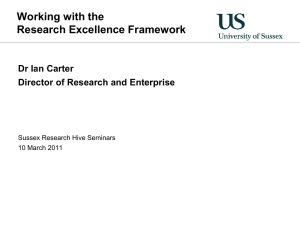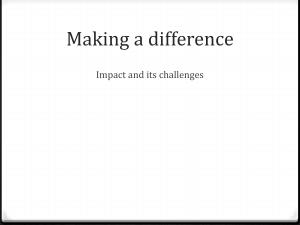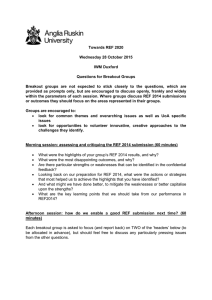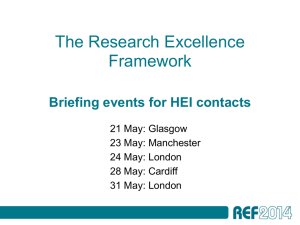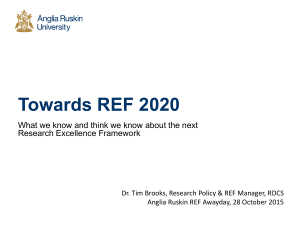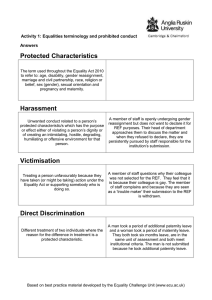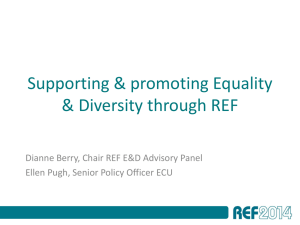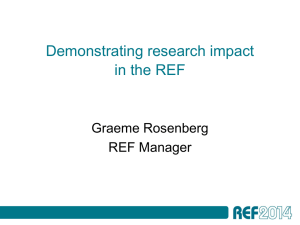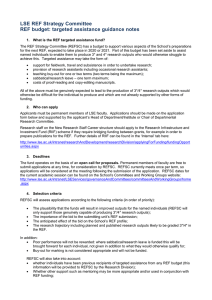Research Excellence Framework: The Sussex Perspective Dr Ian Carter
advertisement
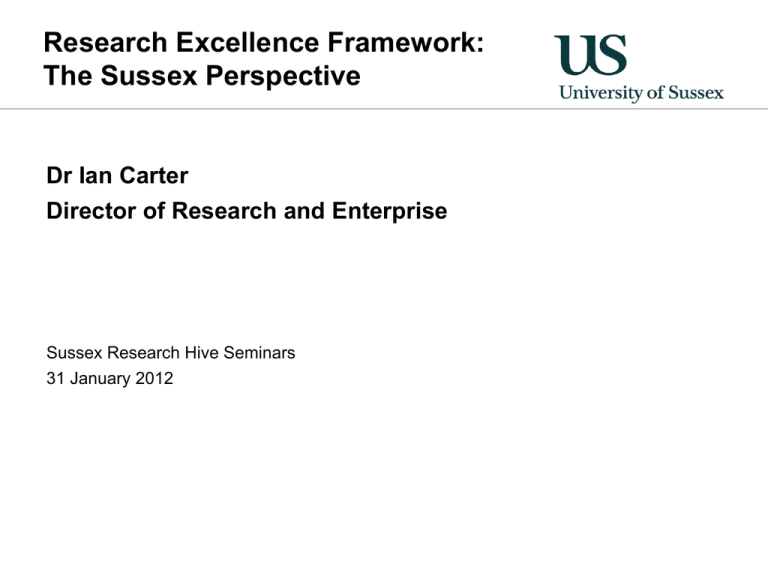
Research Excellence Framework: The Sussex Perspective Dr Ian Carter Director of Research and Enterprise Sussex Research Hive Seminars 31 January 2012 A Summary of the REF • Used to inform core / QR funding (c£1.8Bn p.a.) • Assessment is by peer review, informed by metrics • There are 36 sub-panels, under four main panels • Elements are Outputs (65%), Environment (15%), Impact (20%) • Submission of selected outputs for selected (eligible) staff • Environment includes research income and PGR degrees • Impact has to occur during the period, evidenced by case studies (2 for the first 14.99 FTE + 1 per 10 FTE or part thereof) • Result will be a profile of 4*, 3*, 2*, 1* and Unclassified • No funding allocated to 2* and less Timescales • Guidance on exercise published July 11 • Final panel criteria published January 12 • Assessment period: 1/1/08 – 31/12/13 • Income and students: up to 31/7/13 • Census date: 31/10/13 • Submission: 28/11/13 • Results: Dec 14 • Funding: from August 15 University’s Approach • REF Ready: Framework for preparation and submission - Consistent, appropriate practices in schools and departments - Embedding REF preparations in the planning process - Use of “critical friends” • Pilot REF (to compete March 12) - Schools reviewing publications (completed and planned) - Initial outline impact case studies • Code of Practice approved and submitted July 12 • Full Dummy Run January 13 • Final draft submissions July 13 • Steering Group, Data Group, and central team Questions and Discussion The REF framework Overall quality profile Outputs (65%) Impact (20%) Quality of all types of research Economic, social, cultural and quality of life benefits Academic impact Expert review informed by bibliometrics Environment (15%) Quality and sustainability of the research environment Engagement with users and public Narrative informed by indicators and exemplars Narrative informed by indicators Assessment of Research Impact Research (Output) Period (15 Years) Assessment Period (5 years)
